Despite being one of the original architects of the Great Bear Rainforest campaign, it took veteran activist Tzeporah Berman nearly 20 years to fully grasp the impact of its conservation.
It hit her, quite suddenly, late last year after giving an advocacy speech at the University of Waterloo.
“I was kind of mobbed by all of these professors and academics, and they all seemed really nervous around me,” she recalled. “Then this one woman said to me, ‘I don’t even know what questions to ask you because I’ve been studying you my whole career.’”
Berman remembers feeling like a butterfly pinned to a museum’s exhibit board. She was completely taken aback by the woman’s admiration. To a surprising degree, advocacy and academia typically operate in isolation from one another.
At a dinner with the professors later that evening, it turned out many of them had been studying her career and the campaign to save British Columbia’s Great Bear Rainforest for over a decade.
“It’s moments like that when I realized it’s much bigger in the academic community than I think,” said Berman. “But more than that, it had a massive impact on corporate social responsibility.”
She has had many similar experiences in the decade or so since the War in the Woods — being recognized at conferences in Europe and Asia, and recognizing others who have risen to prominence in environmental circles after entering the movement with the Great Bear Rainforest.
Like a breaching humpback whale hitting the surface of its still dark waters, the rainforest campaigns created a ripple effect around the world that no one, not even Berman, could have predicted.
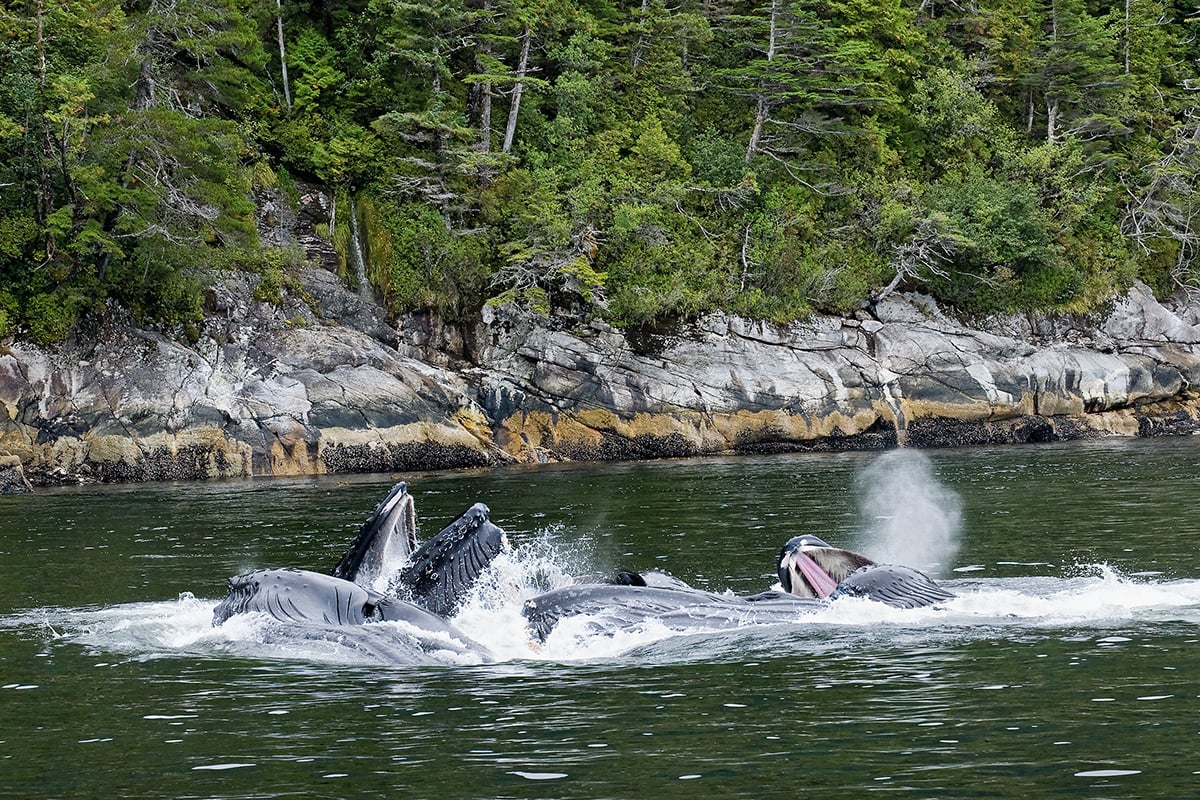
Largest temperate coastal rainforest left on planet
The Great Bear Rainforest — the largest temperate coastal rainforest left on the planet — is a rare and magnificent ecosystem roughly twice the size of Belgium, located off the B.C. coast. The story of its conservation is remarkable; loggers and activists were forced to resolve bitter, historical conflicts, while First Nations seized unprecedented power to create a sustainable future for their people and territory.
The provincial government put aside unilateral methods of land-use governance and agreed to creative approaches for collaborative conservation, while philanthropic organizations put their faith and money in a bold multi-stakeholder negotiation, the scale of which had never been attempted before.
The campaign touched thousands over the course of two decades, across Canada, but also throughout the U.S., Europe and Asia.
“Thousands of people cut their teeth on advocacy and activism working on the Great Bear Rainforest campaign all around the world,” said Berman, “and I think we see that now in the climate movement.”
While the magnitude of its impact is impossible to measure in its entirety, Berman had no trouble rhyming off a list of examples. She herself has designed campaigns for the protection of the Boreal Forest and Chile’s native forests using lessons from the Great Bear Rainforest, and applied them to campaigns against the oilsands.
The rainforest also gave birth to organizations, including the renowned conservation group, ForestEthics, which is flourishing across Canada and the United States. Merran Smith, an early veteran of the campaign moved on to establish Clean Energy Canada, inspired by the bridge-building and bold partnerships forged between diverse interest groups in the Great Bear Rainforest.
According to Ross McMillan, CEO and president of Tides Canada, it further served as a "foundational project" of Tides as a national charity, which got off the ground and branded itself while helping raise $120 million in conservation and economic development funding for First Nations in the Great Bear Rainforest.
Berman said that when the international pressure group SumofUs was getting underway (now with more than five million online members), CEO Taren Stinebrickner-Kauffman sought out early architects of the Great Bear Rainforest campaign for more information on its methods and motivation.
“It affected and inspired a generation of environmentalists all across North America and also in Europe,” she said. “Over the last few years, I’ve met with countless organizations all over the world who have been studying it and applying it in their country, trying to figure out how they can do what we did.”
Coastal First Nations too, have passed on their experience in negotiating with government to Indigenous people in Nunavut, Hawaii, South America, and the South Pacific.
But the ripple effect of the Great Bear Rainforest extends far beyond the world of advocacy, environmentalism, or even the fight for Indigenous rights and title. It brought corporations to their knees, said Berman, and practically re-wrote the rules of corporate social responsibility.
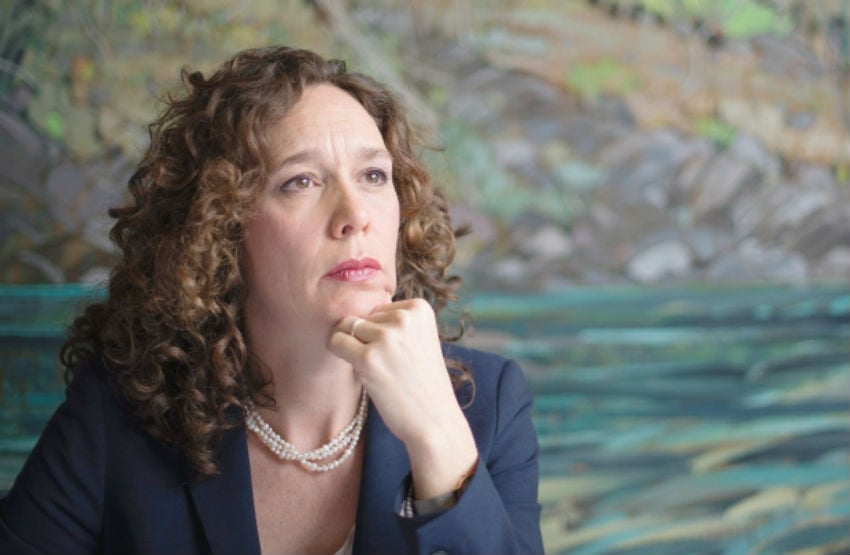
Redefining “good” in the forest industry
Rainforests have long been revered as one of the planet’s greatest natural resources. Together, they are home to more than two-thirds of all the living plant and animal species on the planet, and produce the raw plant materials required for more than 120 Western pharmaceutical drugs.
In environmental circles, they are known as the “lungs of the earth” for their role in creating our atmosphere and as the planet’s “air conditioning system” for regulating the climate and storing incredible amounts of carbon.
The Great Bear Rainforest is no exception. According to Jens Wieting, forest and climate campaigner for Sierra Club BC, it boasts “record-high” carbon storage of up to 1,000 tonnes per hectare — more storage per hectare than any of the world’s tropical rainforests, including the Amazon.
“It’s a very important part of the life support systems of our planet,” he said. “We’re already in a very dangerous zone in terms of carbon dioxide in the atmosphere, so we really dramatically in the short-term have to change our practices in industry and land-use.”
This is part of the movement First Nations, Berman and other early activists in the Great Bear Rainforest started during the protests of the 1990s. They strapped themselves to bulldozers to stop clearcut logging of old-growth trees while their marketing campaigns worked magic on wood, pulp, and paper customers buying product from the B.C. coast.
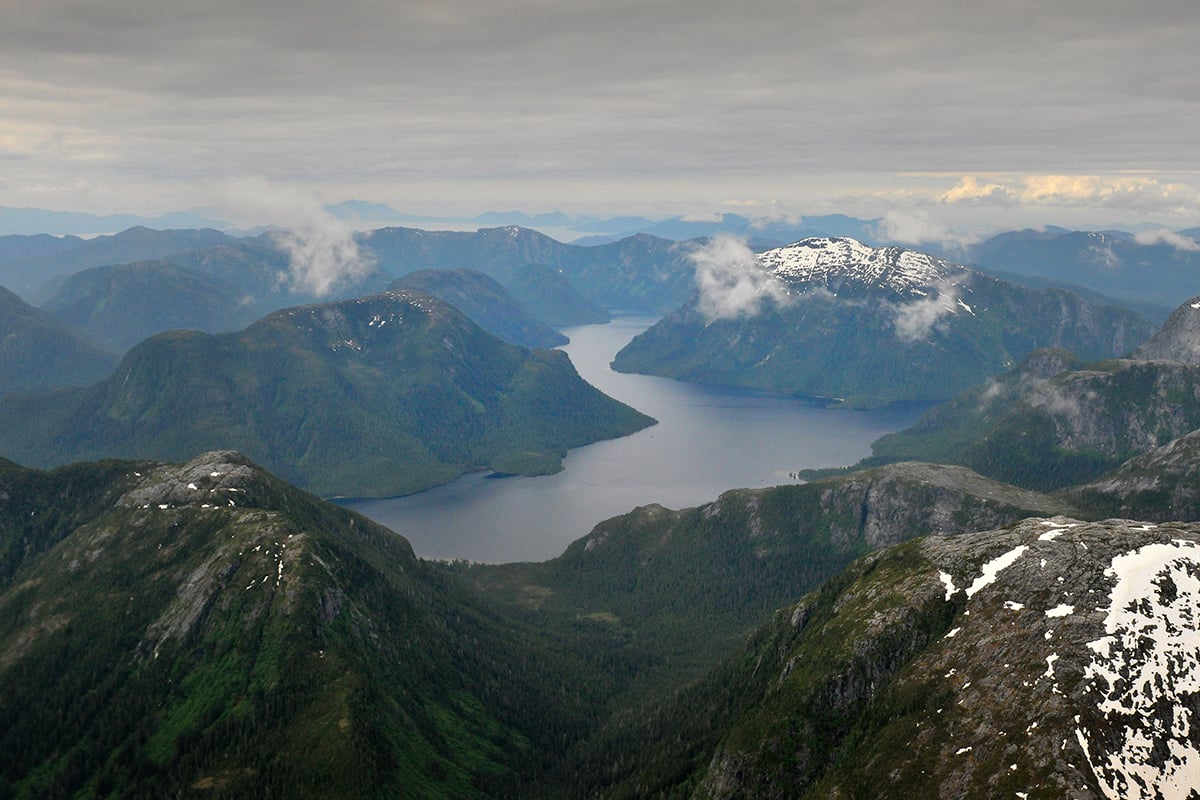
An aerial shot of the Great Bear Rainforest shows old-growth forest covering the rugged terrain of the B.C. coast. Photo by Andrew S. Wright.
“We changed the way paper was made in North America,” Berman explained. “We changed the procurement practices of companies like Home Depot, not just in what they were buying from Canada and British Columbia, but what they bought all over the world.”
In the early 1990s, she explained, ‘corporate social responsibility’ was more or less determined by the companies themselves; whether they turned the lights off at the end of shifts and turned the taps off when they weren’t using them.
The idea that corporate social responsibility for industry had to encompass conservation, economic and social justice for the entirety of its supply chain was something new:
“That impacted the Amazon, it impacted Indonesia,” she said. “It changed the way that ‘good’ is defined in forestry. The Great Bear Rainforest campaign is one of the reasons that we have the the Forest Stewardship Council (FSC) Certification today.”
Now, this process tracks fibre from certified forests all the way to the consumer, and sold with an FSC label indicating the product’s compliance with a stringent set of environmental and social standards.
Yet after taking fire for its logging operations in the Great Bear Rainforest last year, it could be said that TimberWest learned this lesson the hard way. It is a lesson however, that TimberWest has welcomed:
“We’ve learned that it is critical to remain engaged, sensitive and appreciative of all stakeholders and First Nations involved,” said Domenico Iannidinardo, the company’s chief forester and vice president of sustainability.
“The certainty has returned to our operations, and ecological integrity and human well-being are clearly the two pillars that we will be implementing.”
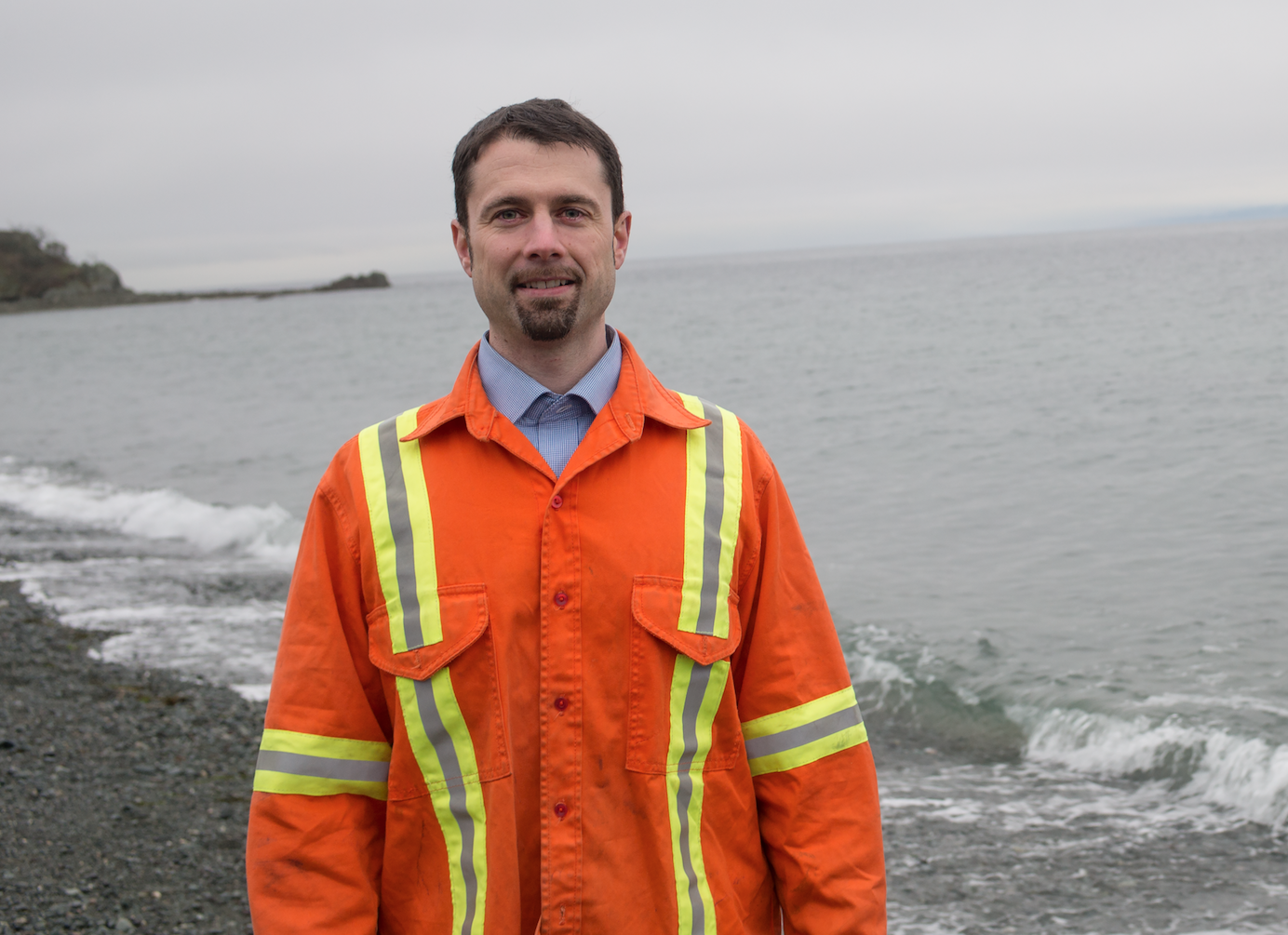
But the forestry industry won’t be implementing these pillars alone — 26 First Nations communities in the Great Bear Rainforest are keeping close watch as the ultimate stewards of the land.
Their vision is backed by a powerful group of government and philanthropic funders, including Tides Canada, the David and Lucile Packard Foundation, the Gordon and Betty Moore Foundation, the Wilburforce Foundation, and the Rockefeller Brother Funds.
Is the Great Bear Rainforest really safe?
Doug Neasloss, Chief Councillor of the Kitasoo Band Council and a bear guide in the Great Bear Rainforest, still remembers the first time he laid eyes on a Spirit Bear.
Despite having grown up in Klemtu, a small community on Swindle Island in the very heart of the region, he hadn’t even heard of the creatures before he was sent out in the woods to find one as a young adult. In those days, the elders of his tribe kept the bears a secret, he explained, to keep prize-hungry poachers out of their territory.
After hours of fruitless searching, Neasloss was convinced they didn’t exist; that is, until he dropped his trousers to “use the washroom,” and the magnificent white bear appeared right before his very eyes.
“As I’m sitting there taking a piss, all of a sudden this Spirit Bear comes out,” he told a laughing crowd during a presentation in Vancouver last year. “He lays down and I’m sitting there looking at this white bear with a salmon in his mouth, and then the sun kind of opens up and the light was shining on his face, and it was a really magical moment.”
It is illegal to kill a Spirit Bear in the Great Bear Rainforest, said Neasloss, but it is perfectly legal to shoot a black bear that carries the recessive genes that produce them as offspring. The Great Bear Rainforest agreement announced last month includes protection for bear dens and habitat, but does not address the hotly-debated issue of trophy hunting.
Grizzly bears are particularly at risk, he said.
“Grizzly bears are some of the slowest reproductive animals on the planet and that’s why we’re trying to do what we can to protect them.” He added that the Spirit Bear is also sacred to his First Nations culture, which makes protection for black bears equally important.
Neasloss, along with Coastal First Nations, are currently in the process of buying out all the outfitter guide certificates remaining in their territories, but trophy hunting will remain legal in many southern parts of the Great Bear Rainforest.
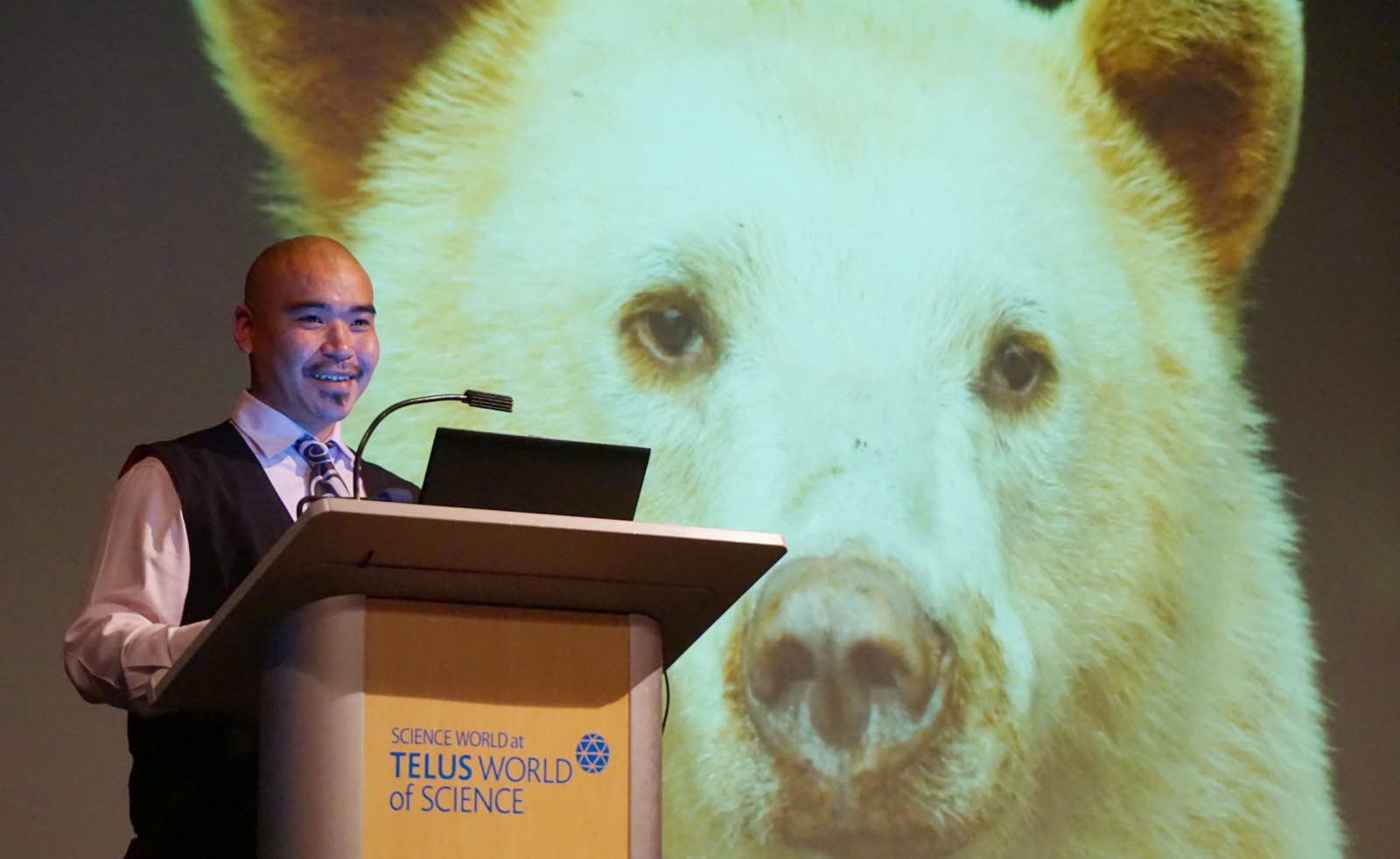
Another contentious issue that could affect the integrity of the ecosystem moving forward is fossil energy projects, said Wieting. While the Great Bear Rainforest agreement imposes strict limits on where and how industrial development can occur, little-known amendments to the B.C. Park Act in 2014 leave parts of the rainforest in provincial parks open to a network of new pipeline developments.
According to Wieting, the document’s lack of marine protection also leaves the rainforest waters vulnerable and tanker traffic shipping oil and gas from terminals in the region.
“We are very concerned about the risks of pollution, noise, and collision with whales and so on,” he explained. “This is a precious area and we should not allow projects like the Enbridge Northern Gateway pipeline — they’re too dangerous for the precious terrestrial and marine ecosystems in this globally outstanding region.”
If approved, the Northern Gateway pipeline would carry 520,000 barrels of diluted bitumen per day to Kitimat, sending tankers through the Great Bear Sea. While Prime Minister Justin Trudeau has already said that the Great Bear Rainforest is “no place for a pipeline,” he has not categorically stated that the Enbridge proposal is dead.
At the Great Bear Rainforest announcement on Feb. 1, B.C. Premier Christy Clark further dodged a National Observer question about whether LNG pipelines — one of the pledges of her government — are likely to be built in the rainforest.
First Nations however, say they are ready to protect the Great Bear Rainforest’s marine ecosystems, and many have developed their own marine plans in addition to the recent terrestrial agreement. Should any dangerous projects be proposed, Nanwakolas Council president Dallas Smith said governments and proponents should be ready to face “significantly-prepared opposition.”
“Now that there’s a more receptive federal government, our goal is to take these completed plans to the feds,” he explained. “We’re looking at, in the next four years, having some significant legislation that supports the marine plans that we’ve developed for the coast.”
Despite efforts to combat these risks, Wieting said the entire rainforest will remain vulnerable to a looming environmental threat currently facing the entire world: climate change.
Tackling climate change in the Great Bear Rainforest
Coastal temperate rainforests are among the most resilient ecosystems on Earth, but they are not impervious to climate change.
In fact, changes in temperature, nutrient cycles and weather are already making old-growth forest is a non-renewable resource; if you cut down a thousand-year-old trees today, said Wieting, the carbon it has stored over a millennium will be released and the trees that replace it tomorrow will be an entirely different species.
Eighty-five per cent of the Great Bear Rainforest is now off-limits to commercial logging, but as humans tip the balance of the global carbon cycle by burning fossil fuels and driving climate change, these ancient carbon storehouses have never been more valuable.
But it's not only clean air that's at stake in the rainforest — its waters also provide spawning and rearing habitat for 20 per cent of the world’s Pacific salmon. A loss in shade-providing trees however, makes them more vulnerable to drying up in a drought or reaching warm temperatures unsuitable for breeding, said Wieting.
The yellow cedar, a tree explicitly protected by the new agreement, is another example of climate change already taking its toll. The yellow cedar's root system depends on snow for protection in the winter, but as a result of changing temperatures, there has been less snow in the region compared to previous decades.
“What that means is that when you have a sudden temperature drop, the yellow cedar roots can be frozen to death because there’s no snow to protect the root system,” Wieting explained. “All these things will be increasingly impacted by climate change in the coming decades so it’s very important to act in a precautionary manner before we lose options.”
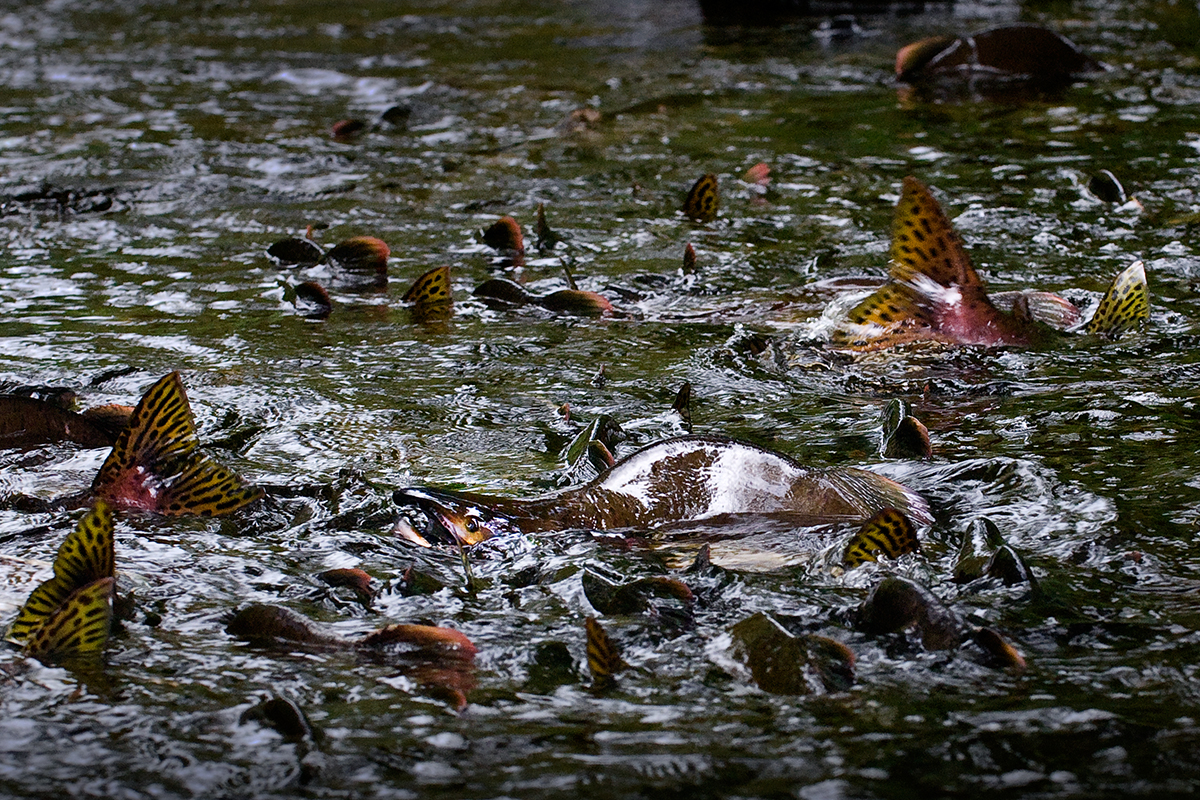
The Great Bear Rainforest agreement is an important first step, said the forest and climate campaigner, and a global “model in climate action.” Discussion of ongoing threats to the ecosystem should not undermine the significance of that accomplishment, he explained, but no one should be wearing blinders when it comes to the need for further action.
“Continuing to build fossil fuel projects undermines the life support systems of our entire planet, including in the Great Bear Rainforest,” Wieting insisted. “The rainforest, whether in protected areas or not, will not remain healthy unless we fight climate change.”
Thanks to the two decades of fierce negotiating however, all of the players at the Great Bear Rainforest table agree that they have never been in a better position to tackle these challenges moving forward.
It’s all part of the Great Bear Rainforest legacy — the ripple effect that Berman spoke about affecting organizations, corporations, conflict resolution, and environmental campaigns all over the world.
A legacy for the lungs of the world
In 2007, First Nations, funders, stakeholders, and politicians announced a $120-million Coast Opportunity Fund to diversify the economies of Indigenous communities and preserve the ecological integrity of Great Bear Rainforest through their governance.
That same year, the World Wildlife Fund recognized their efforts with a prestigious Gift to the Earth Award for demonstrating “global leadership, while at the same time ensuring its local communities have a stake in the region’s future.”
In his 12 years in the political sector, Pat Bell, who was B.C. Minister of Agriculture and Lands at the time, said that these were some of his proudest moments:
“The most important part about any of that is that there’s a relationship there between the environmental community, First Nations, industry and government,” he explained. “When a contentious issue comes forward, they can sit down and talk about and figure out how to get to a positive outcome.”
This includes trophy hunting, climate change, marine planning, and energy projects — anything and everything that may involve conflicting interests and values. When it comes to the idea of ‘legacy,’ like Berman, Bell said it’s something that can’t be measured in the here and now.
“I think the real test in all of this is not the delivery of any specifics in regulation or policy, it’s about whether it created a better economic and environmental environment for people to live in,” he explained. “All of those things are key and I don’t think any of us will know that for a long time. People will be answering that question in 2040.”
Ivan Thompson, program officer for wild salmon ecosystems at the Moore Foundation and an early conservationist in the Great Bear Rainforest campaign, had a slightly different take on the region’s legacy. In addition to becoming a symbol of Indigenous leadership and power, he said the conservation announcement provides a special kind of faith to the rest of humanity.
However impossible it seemed 20 years ago, it proves that economic development can work side-by-side with social justice and environmental responsibility, and this will have important impacts on how the world chooses to act on climate change.
“We’re really screwed,” he said. “We dump too much carbon into the atmosphere and we are now trying to have enormous, unprecedented global conversation about responsible behaviour…
“But people are only going to move to a responsible place if they have hope that they have a future and can see themselves in that future. Now it’s starting to sound a little bit like the Great Bear Rainforest and the conservation deal.”
Final words from the media-shy mediator
When stakeholders, First Nations leaders, and political representatives marched proudly into the Great Bear Rainforest announcement to the pounding of drums on Feb. 1, Daniel Johnston, the mediator for the multi-decade marathon, wasn’t there to see it.
He had already made nonrefundable travel plans, but it didn’t bother him — Johnston said he didn’t need to be there.
“I have a very clear sense of what that room was like,” he told National Observer. “I think they actually all felt a lot of pride.”
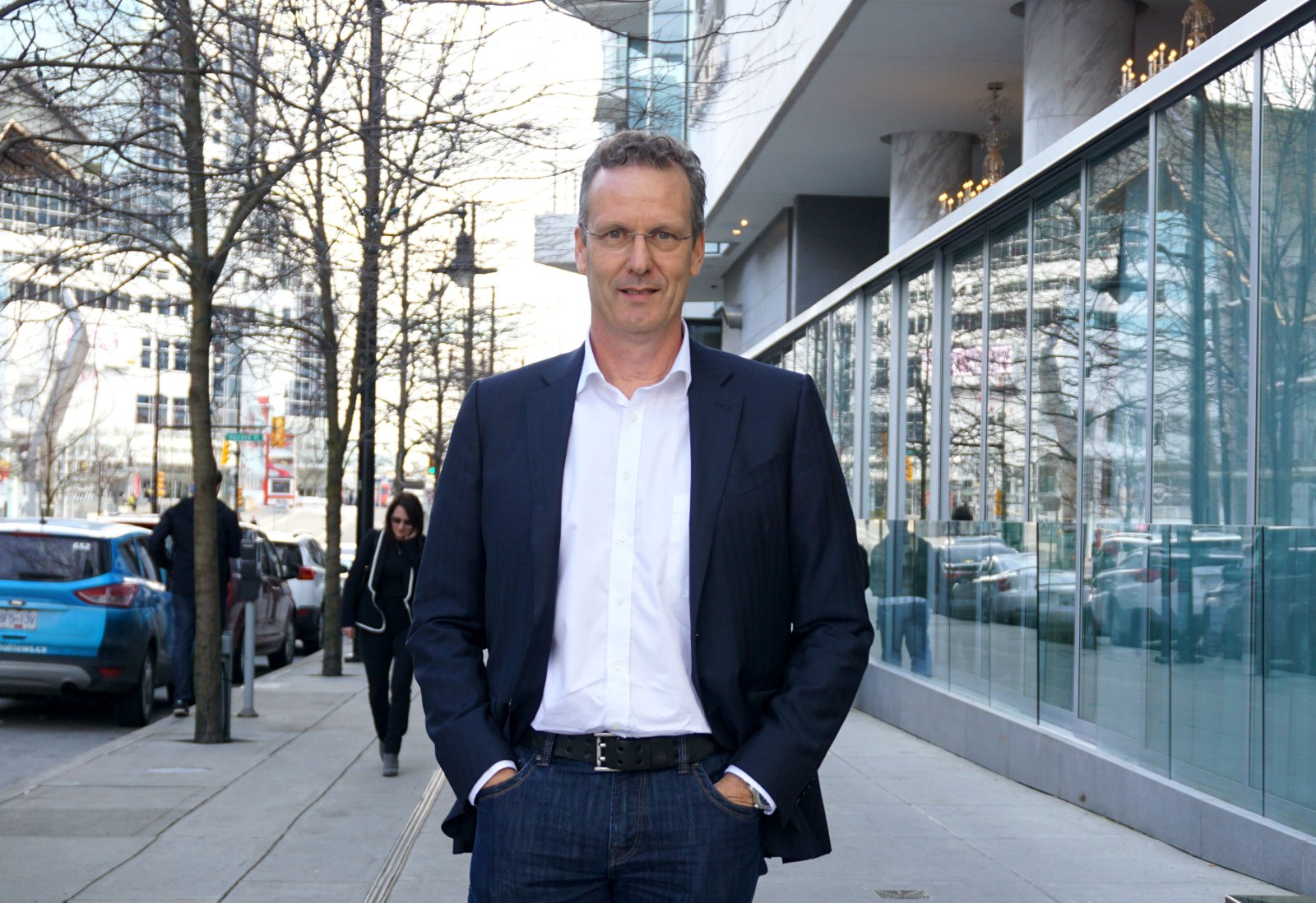
Dan Johnston, the legendary mediator behind the Great Bear Rainforest, works for Pacific Resolutions from his home in Cedar, B.C.
He had spoken with all of the leaders in the days beforehand, and said seeing them in a room together, their interactions were so warm and pleasant one wouldn’t be able to tell who had initially sat where at the negotiating table.
“I am completely, unquestionably, just immensely proud of what they have accomplished,” he said. “It involves a lot of acts of tremendous personal courage when you’re dealing with such highly-polarized circumstances.”
Johnston, who normally doesn’t speak with media for reasons of confidentiality pertaining to his work, declined comment on the outcomes of the Great Bear Rainforest negotiations, but described the process as magical to watch at times. He has mediated well over 30 multi-stakeholder conflicts in his career, but divulged that he has never seen anything equal to the personal and institutional growth that occurred in the Great Bear Rainforest.
"I've never been through one of these things where you can make a breakthrough until people create a personal connection," he explained. "It's only once they discover things that they share that they begin to feel confident they can take risks in conversations. To solve this stuff, you have to take risks."
These risks paid off with reward not only when the agreement was signed last month, but last week as well when First Nations joined the province in signing the Great Bear Rainforest Management Act. The conservation of the rainforest and its human well-being provisions are now enshrined in legislation, leaving a permanent legacy for the Lungs of the Earth.
Editor’s Note: As we have seen through this special series, Canada has given a great gift to the world with The Great Bear Rainforest agreement but its true legacy will only be revealed over the years to come. Opportunities are yet to be realized and threats still remain. Please join the National Observer as we host an expedition to the Great Bear this fall and continue our coverage of the implementation and new challenges moving forward.
Caption Information for top photo:
Standing left to right: Scott Rhemus (formerly of the Packard Foundation), Merran Smith (Clean Energy Canada), Ross MacMillan (Tides Canada), Richard Brooks (Greenpeace Canada), Vicky Husband (formerly of Sierra Club BC), Jody Holmes (Rainforest Solutions Project), Catherine Stewart (Canopy), Chris Allnutt (formerly of Rainforest Solutions Project), Stephanie Goodwin (formerly of Greenpeace), Carol Newell (Renewal Partners), Carol Orr (Wilburforce Foundation)
Kneeling left to right: Karen Mahon (ForestEthics), Nicole Rycroft (Canopy), Valerie Langer (ForestEthics), Lisa Matthaus (Organizing for Change), Tim Greyhavens (Wilburforce Foundation)
This article is part of a series produced in partnership by National Observer, Tides Canada, Teck, and Vancity to highlight the stories, people, and history behind the Great Bear Rainforest conservation agreements. Tides Canada is supporting this partnership to foster integrated solutions for conservation and human well-being. National Observer has full editorial control and responsibility to ensure stories meet its editorial standards.

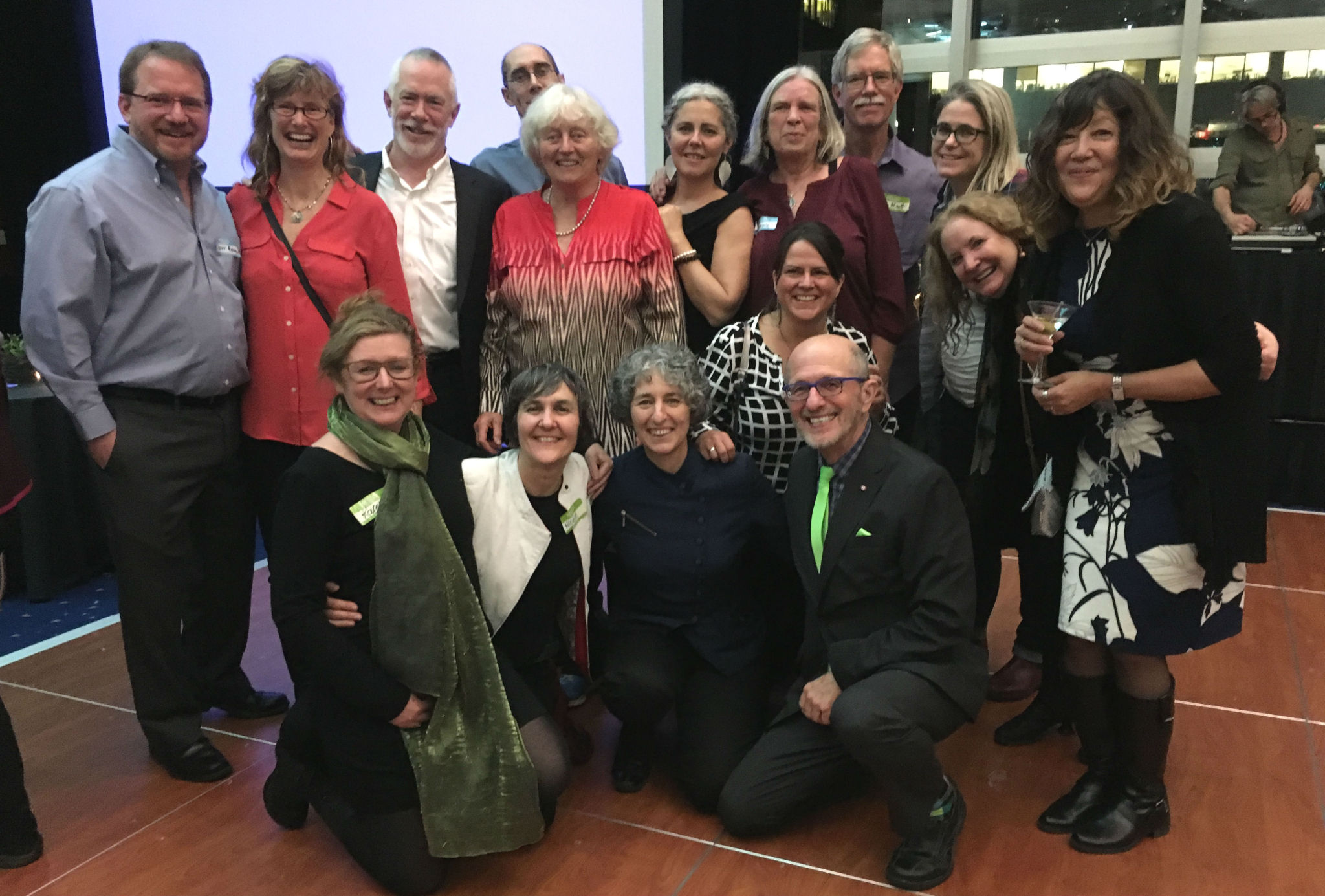


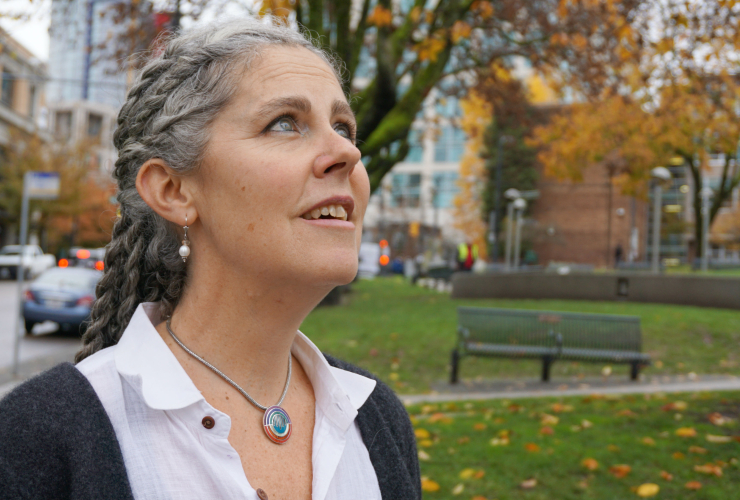
Comments